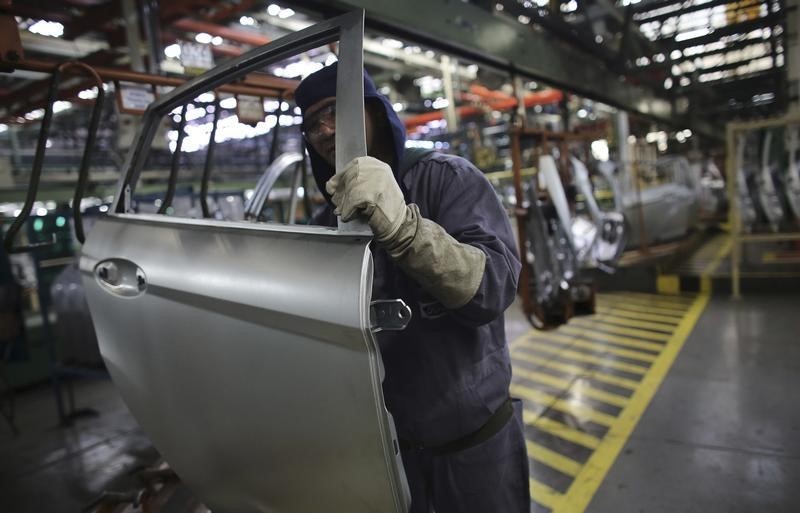Bullish indicating open at $55-$60, IPO prices at $37
Investing.com - A permanent doubling in U.S. President Donald Trump’s tariffs on steel and aluminum would add "notable" costs to the auto industry’s biggest carmakers, according to analysts at Wells Fargo (NYSE:WFC).
On Wednesday, an increase in Trump’s longstanding levies on steel and aluminum to 50% from 25% came into effect. Trump argued that the move -- which made good on a threat issued last week -- was necessary to protect national security and dissuade dumping of the metals in the U.S. by other countries.
In a note to clients, the Wells Fargo analysts said there are roughly 2,100 pounds of various types of steel and approximately 400 pounds of aluminum included in the manufacture of a vehicle. At April spot prices, this would amount to around $870 in steel and $450 in aluminum per car -- or more than 50% of total raw material costs.
The brokerage estimated that, should the levies remain in place permanently, expenses at General Motors (NYSE:GM), Ford Motor (NYSE:F) and Jeep-owner Stellantis (NYSE:STLA) would go up by about $1.1 billion, $800 million, and $500 million, respectively. These so-called Big 3 Detroit automakers are among some of the largest automakers in the United States.
The analysts flagged that there tends to be a "two-quarter lag" between upticks in spot prices and the impact on contract prices, meaning that the effect of the higher tariffs may start to be felt in the second half of this year and rise even further in 2026.
Still, they noted that steel prices have climbed only "modestly" since the elevated levies took effect, "possibly in anticipation the tariffs may fall once global trade deals are reached".
Markets are keen to see if the U.S. and a host of other nations will reach agreements to avoid the imposition of punishing -- albeit delayed -- "reciprocal" import duties in early July.
Meanwhile, Trump and Chinese counterpart Xi Jinping are to hold discussions sometime this week, which investors hope will contribute to a cooling in trade tensions between the world’s two largest economies.
